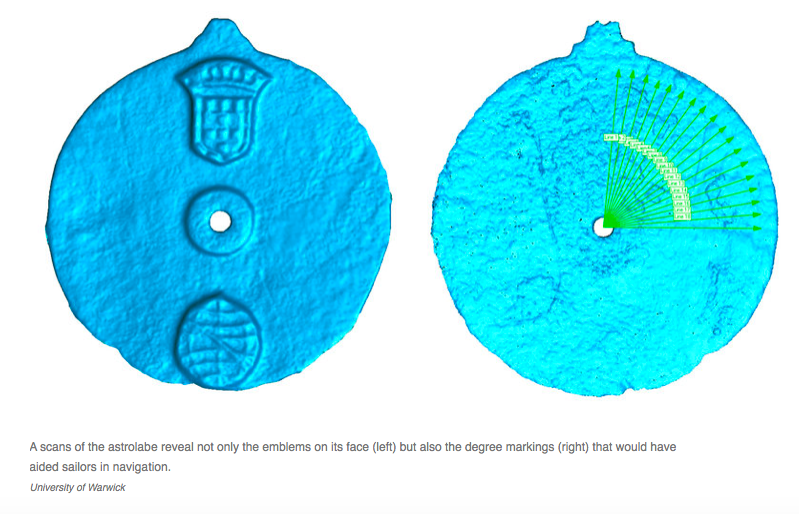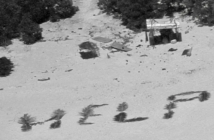If you think navigating was difficult in the days before GPS, take a look at this. It’s the world’s first astrolabe, a bronze disc that Vasco da Gama’s navigators used to sail from Portugal to India around 1500, just a few years after Columbus found America.
In 1503, da Gama was returning home after his second voyage to India. He left several ships behind to explore (and exploit) the area, but they sank in storms. Several years ago, researchers found this 7-inch astrolabe among many artifacts on one of those ships, Esmeralda, off the coast of Oman. At first, they didn’t know what it was, but scientists at the University of Warwick used 3D imaging to determine that it was in fact the earliest astrolabe ever discovered, by several decades.
The imaging revealed notches around the disc’s outer edge, each separated by five degrees. Navigators back in 1500 were able to use the astrolabe to judge a celestial body’s position in relation to the equator and their own position. Consider this the next time you push the power button on your handheld GPS, the one that fits in your jacket pocket and tells your position within a matter of a few yards. Read more:




